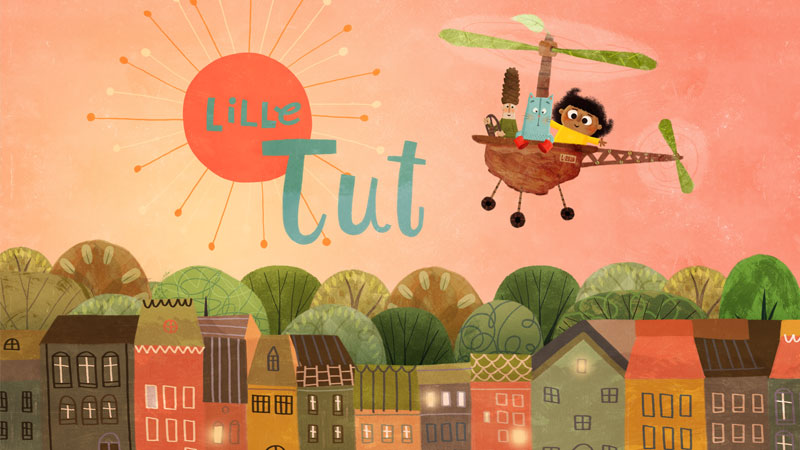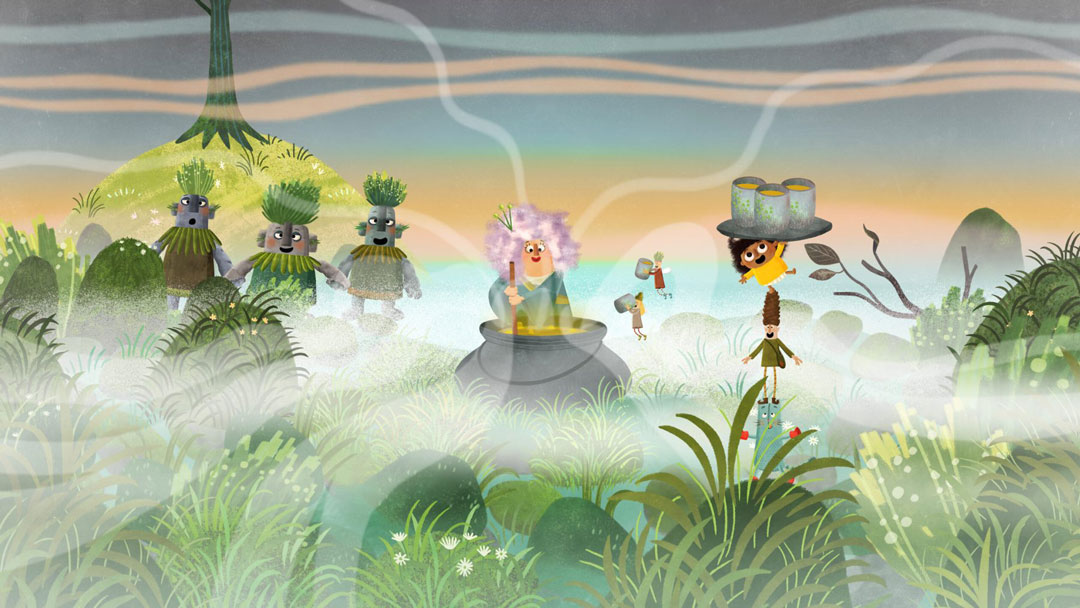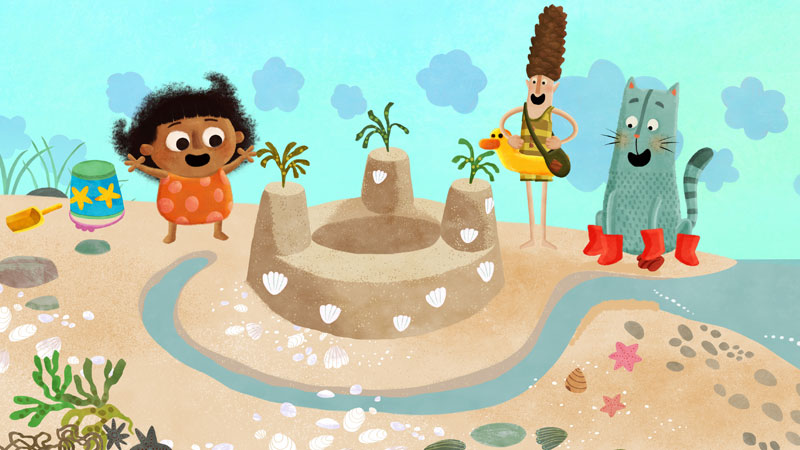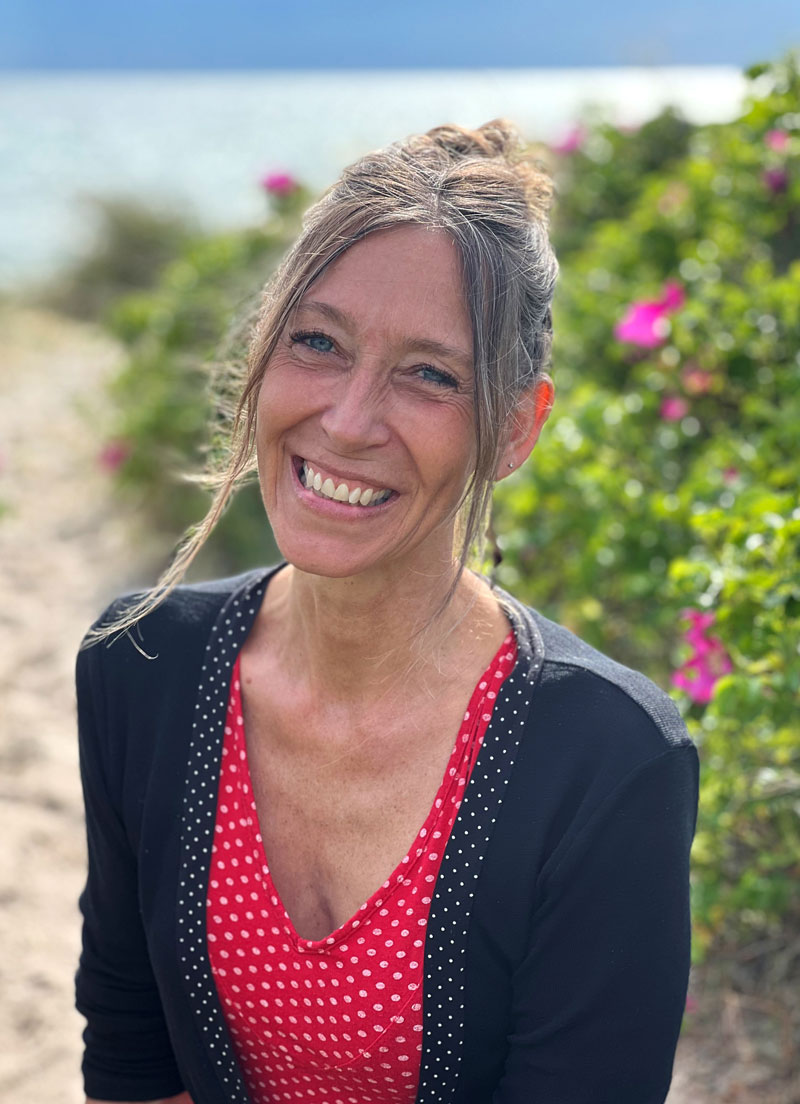Lille Tut
Maria Mac Dalland on the Creation and Origins of Lille Tut

WeAnimate 2024-04-17 | wam#0037
Maria Mac Dalland is an animator, compositor, writer, and director, with an incredibly diverse portfolio. As the creative force behind Lille Tut, she is deeply involved in every part of the process, including writing the books that accompany the show. Here’s what she has to say about the origins and production of Lille Tut.
I learned animation from Jannik Hastrup, because at that time there weren’t animation schools. His method was to teach every part of the animation process, so I learned a lot about making animation by hand, from beginning to end. A few years later I went to Nicaragua. I was only 18, and I got a job from the Ministry of Culture to work at their film institute. I proposed that they add animation, and they agreed… Looking back, I still can’t believe that I suggested it and that they actually hired me. I took an old 16mm camera, and for two years I worked with a group of young students making animated films. There was absolutely no equipment or anything, so I had to invent all these different ways of doing things, and we had to make literally everything by ourselves, by hand. We succeeded in making little films for campaigns about health and literacy and things like that, and those years were really important for me. That’s my foundation as an animator and a filmmaker: let’s find a solution. Let’s just take this and that and get it done. I find it exciting to work this way; to invent and to experiment and find solutions, and I am very hands-on during the production process.
The idea for Lille Tut came from a few different places. Firstly, I was working on My Little Dog Maestro, and DR asked if it would be possible to rework the second season of that show for a much younger audience. I didn’t think it would work for that series, but it got me thinking about creating for smaller children. There was a little pixie character in that show that very young children always responded to and were excited about, and I kept it in mind.
Then I remembered that, as a child, I imagined that there was a tiny pixie living in a mousehole under my bed, and that it would make me small and take me on adventures. So there we had the character of the pixie and of the little girl, but she needed a clumsy friend. The Gato character is the one who feels a bit uneasy with new things, but when he eventually tries things they turn out to be good experiences. This is important because this happens to small children every single day. They are experiencing everything in life for the first time, so they need encouragement to be confident.

I know Morten Kaufmann from way, way back, when we worked at the same little animation studio in Copenhagen and became good friends. Then he went to film school and started making features, and we didn’t connect for a long time. But when I was making My Little Dog Maestro, I wanted a strong relationship with a producer I could really trust and collaborate with. So I called him and he had just recently founded Toolbox Film. They weren’t planning on working on animation, but I think he has a soft spot for it, and agreed to do it. He has been producing and co-writing Lille Tut, and I am so happy to be working with him and Toolbox Film on this project.
One of the special things about the show is that it is aimed at the very youngest target group. There is a huge difference in how you communicate with this smallest group of children, from 1-3, than with 4-6 year olds. When I started on the project, I wasn’t really aware of how dramatic the differences were. I mean, I was aware; as a mother and a grandmother I know how special and unique this age group is. But I wasn’t really aware of how important that difference would be as a storyteller and a filmmaker. This target group requires a very different way of telling stories. They cannot necessarily link past events together to form a linear narrative, so every moment is a unique present moment. They also love repetition, because it allows them to recognize and anticipate, and makes them feel smart. It actually creates whole new possibilities as a storyteller, to explore a new way of communicating, which I find very interesting and exciting.

We got so lucky with the music. I wanted to be focused on the core of the children, connecting with their centers, and music is how we connect with the body. I knew from the beginning that the music for this show had to be much more than just background music; it had to be part of the storytelling from the very beginning. This was all happening just at the beginning of Corona, and Palle and Sille had just canceled all their shows. So when I called and asked them, they immediately agreed. We had the most beautiful workflow, where I would send them the first draft of the script, then they would make rough musical sketches, then I would put it in a timeline and send it back, and everything would go back and forth until we had nearly final music before even beginning animation. The animators then had this score to work with, and it was very inspiring for them, and I think you can feel how the music and the story go together so deeply. At the premiere the other day there were a lot of children in the theater, and I loved how they couldn’t sit still and just had to move and dance along to the show. It was exactly what I hoped!
We were already in the process of making the show when we were approached by the book publisher. They wanted to make a companion book series, and then asked if they could publish the books before the series premiere, as if to suggest that the show is based on the books. The stories are similar, but of course books communicate in a whole different way. There are only four books so far; the publisher is waiting to see how they sell after the show airs. I have more time now to work on them, and would enjoy it, so I hope there are more.
My intention is not to educate or include lessons in the series. On the contrary, I think we can learn from children in this age group. Two years old is the most beautiful age. They haven’t yet lost the connection to something that is bigger than themselves. Children that age still have an intuitive connection to feeling like part of nature, and not being disconnected from it. The most important thing we can do is to nurture this, and not to spoil it, and that’s really what we are trying to do in Lille Tut: tap into these experiences, and join children in celebrating life and nature.

Credits

Meet the Artist
Maria Mac Dalland
Where can you find Maria?
Collaborators

WeAnimate Magazine is dedicated to all the people who animate and make things, lines, and ideas come to life.
WeAnimate ApS is founded and owned by The Danish Animation Society (ANIS) www.anis.nu
Tell us what you think? Tell us at hello@weanimate.dk | #weanimate | our Privacy Policy
